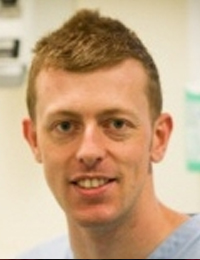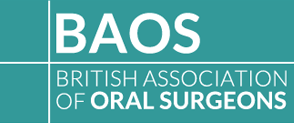
Greg Gerrard
BAOS Council Member
Risk Reduction in Oral Surgery
Visiting the excellent ‘Teeth’ exhibition at the Wellcome Collection was a good reminder of just how much the profession of dentistry has changed. Removing teeth remains the mainstay of our work but the way we treat our patients with respect for their autonomy has completely transformed from the paternalistic approach of the past. The demands of treating today’s patients bring some challenges – chiefly a rising tide of litigation and a regulatory system that the GDC themselves recognise needs urgent reform1.
Representatives of Council and our President recently met with senior leaders at the Medical Defence Union to discuss issues of mutual concern. We are keen to find ways in which we can support our members to provide safe, effective care that leaves patients satisfied and avoid complaints and litigation. We practice in a risky area of dentistry, performing procedures that come with the certainty of unpleasant side effects and the possibility of complications that can affect patients for the rest of their lives. Much can be achieved by remembering the basics – be friendly, listen well, think of consent as a process (not an event) and write good notes.
Some hazards are harder to mitigate. For those members seeing the bulk of their patients on referral, there is the obvious immediate risk that we are meeting them for the first time. We have not had the opportunity to build up a reserve of goodwill over the years that many general dental practitioners can rely upon if problems with treatment arise. Since the ruling of Montgomery v Lanarkshire2, there is a greater expectation that we understand our patients as individuals and consider which risks they might attach particular significance to. This poses a significant challenge when we may have only 15 minutes with the patient and means we need some additional help from primary care colleagues in the detail of their referral to convey some of their knowledge of the patient.
Whilst there are many areas of our practice where the standard of care is easily established, there are some areas that attract more controversy and for many surgeons, uncertainty about which options to present to patients and how the risks and benefits should be framed. These include the role of coronectomy, the early management of nerve injuries and the necessity of cone beam imaging of high risk wisdom teeth (especially for colleagues without easy access to CBCT equipment).
We plan to create a joint e-learning package with the MDU on risk management in Oral Surgery which will hopefully prove as successful as the module that they have co-authored with the British Society of Periodontology. Council will also consider whether BAOS should provide best practice consensus guidelines in specific areas that are not covered by other guidance.
One specific area of concern from the MDU relates to their difficulty in defending cases where a nerve injury has been identified following wisdom tooth removal but no referral to a specialist nerve injury centre has been made. Many of these cases have been settled due to the lack of referral rather than the occurrence of the injury. This is certainly an area in which BAOS may be able to help by signposting members to centres providing these services along with a treatment algorithm depending on the nature of the injury.
In addition to these projects, there are already some great resources on our newly relaunched website about patient safety and LocSSIPs which should now be in use across dentistry to prevent wrong tooth extractions. We have also published revised patient outcome and experience measures that can help drive quality improvement for oral surgery providers in both primary and secondary care3.
1. General Dental Council. Shifting the balance: a better, fairer system of dental regulation. Updated 9 March 2017. Available at: https://www.gdc-uk.org/about/what-we-do/regulatory-reform (accessed May 2018).
2. Montgomery v Lanarkshire Health Board [2015] SC 11 [2015] 1 AC 1430.
3. Gerrard G, Jones R, Hierons RJ. How did we do? An investigation into the suitability of patient questionnaires (PREMs and PROMs) in three primary care oral surgery practices. British dental journal. 2017 Jul;223(1):27.
